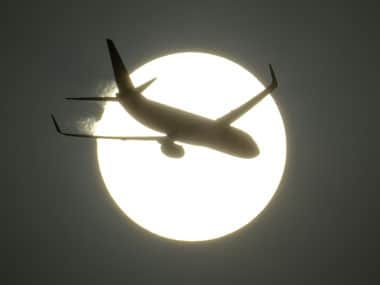The government has kick-stared the reform process for the aviation sector by proposing to make radical changes to existing policies. On 8 January the Civil Aviation Ministry released a draft of the revised policy on Regional and Remote Area Air Connectivity, which seeks to replace the current 5/20 rule (where airlines need to have a minimum fleet of 20 aircraft and five years of operational experience) for starting international flights with DFCs (domestic flying credits). [caption id=“attachment_2043843” align=“alignleft” width=“380”]  Representational Image. Reuters[/caption] So what is DFC rule? Airlines can only fly abroad by earnings credits from their domestic operations by providing connectivity to underserved and unserved areas. The DFC would apply to new airlines and new routes will be allotted to old airlines. “Indian airlines would be able to start overseas services if they have a minimum fleet of five aircraft and have accrued sufficient credits by deploying capacity on domestic routes. “An airline desiring to fly on international routes must have accrued a minimum of 200 crore DFCs (domestic flying credits) for initial designation on international route,” the draft presentation said. According to the draft, “Operational data shows that an airline with 5 aircraft of the size of an Airbus A320 can operate about 150 crore ASKms in one year. With multiplier effect, an airline can do 200 cr DFCs in a year.” The note also added that airlines would be able to purchase 25-30 percent DFCs from other airlines. On how to earn credit, the draft states that operators would earn one credit per passenger kilometer flown on Category-I routes (where traffic exceeds 5 lakh people, largely inter-metro routes ), three credits per revenue earning passenger kilometer flown on Category-II (loss making routes) and Category-IIA routes, and five credits for flying to unused airports. The multiplier is expected to encourage operations to remote, intra-remote and unutilised airports and help small operators sell credit to ensure their viability. “Scheduled commuter operators with smaller aircraft will be encouraged to earn capacity deployed as DFCs and trade them with airlines planning new international flights. Allowing Scheduled Commuter Airlines to sell the DFCs will help in viability of commuter airlines.” the release added. The draft also suggests expanding the Category-I routes to 26 from the existing 14, include Uttarakhand and Himachal Pradesh airports in Category-II routes, and delete deployment obligations for Category-III routes.
Domestic airlines now need to earn DFCs to fly abroad, fleet size requirement reduced to 5
Advertisement
End of Article


)

)
)
)
)
)
)
)
)



